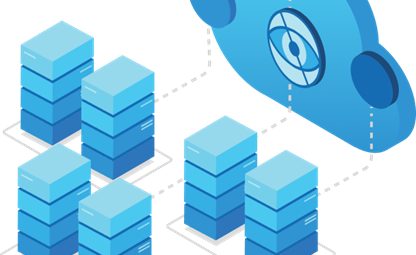16 Dec 2022
Application Innovation And Modernisation

Application innovation refers to the process of creating new or improved applications that provide unique and valuable solutions to specific problems or needs. This can be done through the development of new technologies, the integration of existing technologies in novel ways, or the combination of different technologies to create a more comprehensive solution.
Application innovation is an important aspect of the broader field of innovation, which encompasses the creation of new ideas, products, processes, and services that have the potential to add value to society. In the context of applications, innovation can lead to the development of new and improved software that can help businesses, organizations, and individuals to be more efficient, productive, and competitive.
Examples of application innovation include the development of mobile apps that allow users to access information and services on the go, the creation of social networking platforms that connect people from around the world, and the development of machine learning algorithms that can help to automate complex tasks.
To support application innovation, organizations may invest in research and development, hire talented software developers and designers, and provide the necessary resources and infrastructure to support the development of new and improved applications. Additionally, organizations may also encourage collaboration and idea-sharing among employees and partners, and create a culture that fosters innovation and creativity.
Application innovation is an important driver of progress and can help to create new opportunities and solve complex challenges in a wide range of industries and sectors.
Application Modernisation
Azure cloud can provide several advantages to businesses today, including the following:
- Increased efficiency: By modernizing their applications with Azure cloud, businesses can benefit from improved performance and scalability, as well as reduced downtime and maintenance. This can help them to increase efficiency and productivity, and better serve their customers.
- Reduced costs: App modernisation with Azure cloud can also help businesses to reduce their IT costs by taking advantage of the cloud's pay-as-you-go pricing model and eliminating the need for on-premises infrastructure.
- Improved security: Azure cloud provides advanced security features and compliance certifications, which can help businesses to protect their applications and data from cyber threats.
- Enhanced collaboration: Azure cloud also offers a range of tools and services for collaboration and communication, which can help teams to work together more effectively and improve their overall productivity.
- Greater flexibility: With Azure cloud, businesses can easily scale their applications up or down to meet changing demand, and quickly add new features and capabilities as needed. This can provide them with greater flexibility and agility, and enable them to respond quickly to changing business needs.
Modern Integration
Modern integration refers to the use of modern technologies and approaches to integrate different applications and systems within an organization. When moving to the Azure cloud, modern integration can bring several benefits to businesses, including the following:
- Increased efficiency: Modern integration technologies and approaches can help businesses to automate their processes and reduce manual efforts, which can increase efficiency and productivity.
- Improved data quality: Modern integration solutions can help businesses to clean and transform their data, ensuring that it is accurate, consistent, and up-to-date. This can imprdecision-makingking and support business growth.
- Enhanced security: Modern integration solutions can also help businesses to secure their data and protect it from cyber threats, which is particularly important when moving to the Azure cloud.
- Greater agility: Modern integration solutions can enable businesses to quickly and easily connect different applications and systems, which can provide them with greater agility and enable them to respond quickly to changing business needs.
- Reduced costs: Modern integration solutions can also help businesses to reduce their IT costs by enabling them to integrate their applications and systems without the need for custom code development. This can help them to save time and money, and focus on their core business operations.
Intelligent Application
Intelligent apps are applications that use artificial intelligence (AI) and machine learning (ML) technologies to provide advanced capabilities and functionality. These apps can help businesses in several ways, including the following:
- Improved decision-making: Intelligent apps can use data and analytics to provide insights and recommendations that can help businesses to make better decisions. For example, an intelligent app can use data about customer behavior and preferences to recommend products or services that are most likely to be of interest to them.
- Enhanced customer experience: Intelligent apps can also be used to improve the customer experience by providing personalized recommendations, real-time assistance, and other advanced features. For example, an intelligent app can use natural language processing (NLP) to understand and respond to customer inquiries, or use image recognition to identify and classify products in a customer's shopping cart.
- Increased efficiency: Intelligent apps can also help businesses to automate their processes and reduce manual efforts, which can increase efficiency and productivity. For example, an intelligent app can use optical character recognition (OCR) to automatically extract data from scanned documents, or use predictive analytics to identify potential problems and suggest solutions.
- Better collaboration: Intelligent apps can also support better collaboration within teams by providing tools and features that enable team members to work together more effectively. For example, an intelligent app can use NLP to extract key information from meetings and reports, or use machine learning algorithms to identify patterns and trends in data.


